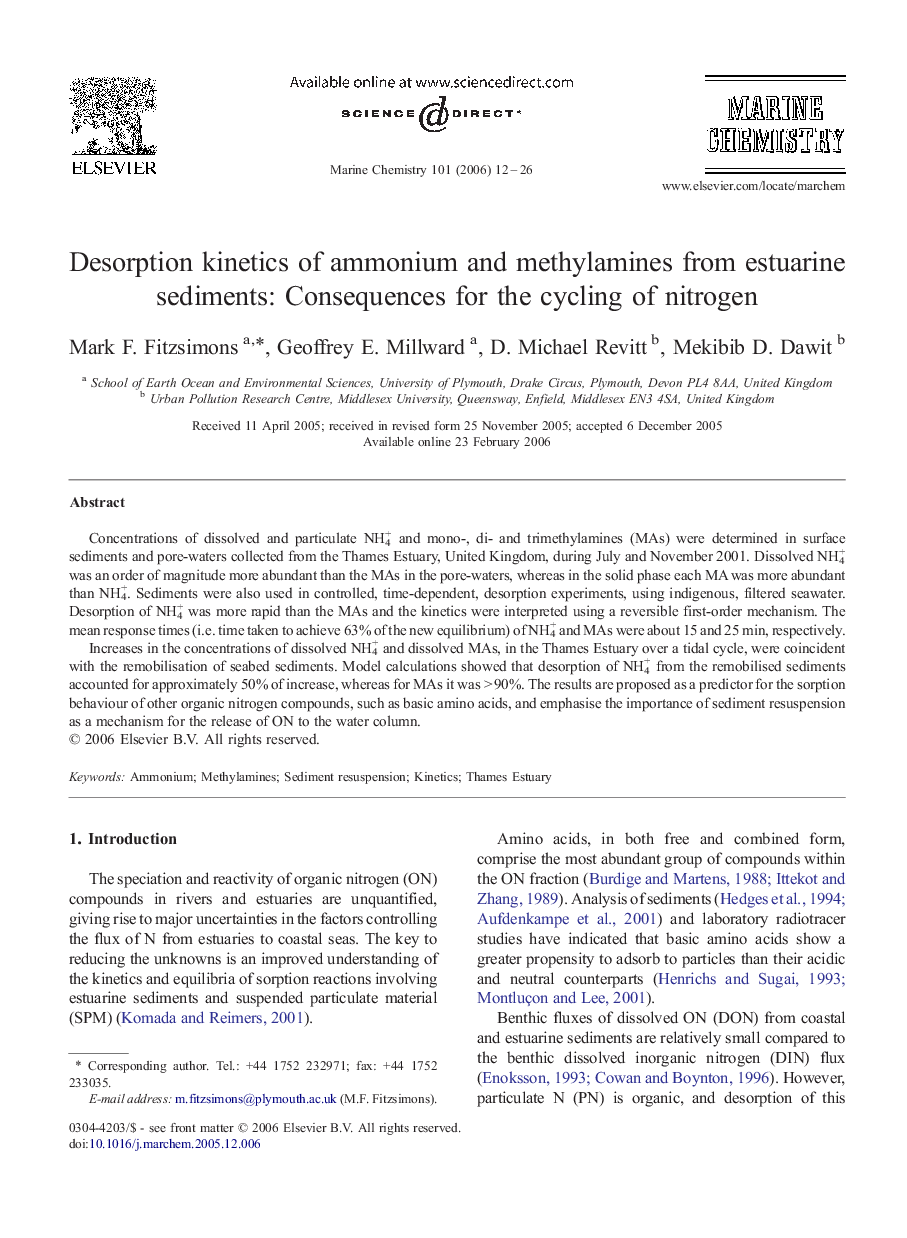| Article ID | Journal | Published Year | Pages | File Type |
|---|---|---|---|---|
| 1263368 | Marine Chemistry | 2006 | 15 Pages |
Concentrations of dissolved and particulate NH4+ and mono-, di- and trimethylamines (MAs) were determined in surface sediments and pore-waters collected from the Thames Estuary, United Kingdom, during July and November 2001. Dissolved NH4+ was an order of magnitude more abundant than the MAs in the pore-waters, whereas in the solid phase each MA was more abundant than NH4+. Sediments were also used in controlled, time-dependent, desorption experiments, using indigenous, filtered seawater. Desorption of NH4+ was more rapid than the MAs and the kinetics were interpreted using a reversible first-order mechanism. The mean response times (i.e. time taken to achieve 63% of the new equilibrium) of NH4+ and MAs were about 15 and 25 min, respectively.Increases in the concentrations of dissolved NH4+ and dissolved MAs, in the Thames Estuary over a tidal cycle, were coincident with the remobilisation of seabed sediments. Model calculations showed that desorption of NH4+ from the remobilised sediments accounted for approximately 50% of increase, whereas for MAs it was > 90%. The results are proposed as a predictor for the sorption behaviour of other organic nitrogen compounds, such as basic amino acids, and emphasise the importance of sediment resuspension as a mechanism for the release of ON to the water column.
